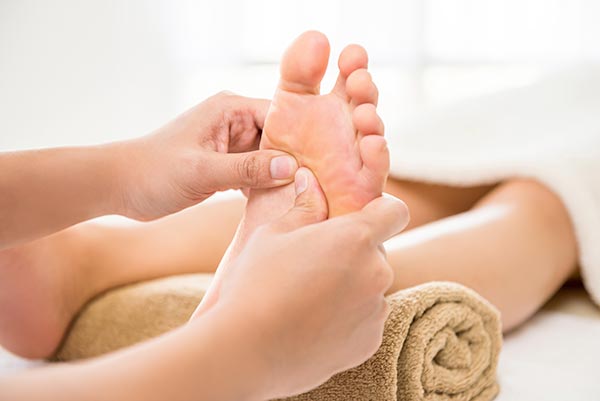Reflexology found to provide pain relief post-appendectomy
09/24/2019 // Evangelyn Rodriguez // Views
Tags: abdominal pain, alternative medicine, analgesics, appendectomy, appendicitis, foot reflexology, goodhealth, goodmedicine, goodscience, healing arts, natural cures, natural medicine, pain relief, reflexology, remedies, research, surgical pain, therapy

- Appendicitis is the most common cause of severe abdominal pain. The associated post-surgical pain is also a common problem.
- Today, patients are opting for non-drug methods and alternative medicine to reduce the adverse effects of drugs.
- Reflexology involves the application of pressure on specific areas, such as the palms, feet, and ears. It is believed to reduce stress and pain.
- For the clinical trial, the researchers recruited 105 patients at the Imam Reza Hospital of Mashhad and divided them into three groups: intervention, control, and placebo.
- The intervention group received pressure on a defined area of the right foot for about 10 minutes and on the Shen Men point of the ear for a full minute. Meanwhile, the placebo group received the equivalent of these on the left foot and left earlobe. The control group received only routine care. All the patients received analgesics as required.
- The researchers compared pain intensity and analgesic consumption between all patients before and immediately, one hour, six hours, and 24 hours after the intervention. They evaluated the results at a 95 percent confidence level and analyzed data using SPSS software.
- The researchers reported that, at the beginning of the study, the mean pain intensity in the three groups was not significantly different.
- After reflexology treatment, they observed a notable difference in pain intensity between the intervention group and the other groups.
- The intervention group also had lower methadone consumption than the other two groups.
Based on these findings, the researchers concluded that reflexology is effective for reducing pain after appendectomy surgery.
Journal Reference:
Khorsand A, Tadayonfar MA-R, Badiee S, Aghaee MA, Azizi H, Baghani S. EVALUATION OF THE EFFECT OF REFLEXOLOGY ON PAIN CONTROL AND ANALGESIC CONSUMPTION AFTER APPENDECTOMY. The Journal of Alternative and Complementary Medicine. 01 December 2015;21(12):774–780. DOI: 10.1089/acm.2014.0270
Related Topics
abdominal pain alternative medicine analgesics appendectomy appendicitis foot reflexology goodhealth goodmedicine goodscience healing arts natural cures natural medicine pain relief reflexology remedies research surgical pain therapyLatest News
Related News
07/10/2023 / By Zoey Sky
07/05/2023 / By Ethan Huff
07/05/2023 / By Kevin Hughes
07/04/2023 / By Olivia Cook
07/04/2023 / By Zoey Sky
Take Action:
Support Natural News by linking to this article from your website.
Permalink to this article:
Copy
Embed article link:
Copy
Reprinting this article:
Non-commercial use is permitted with credit to NaturalNews.com (including a clickable link).
Please contact us for more information.
Please contact us for more information.






















